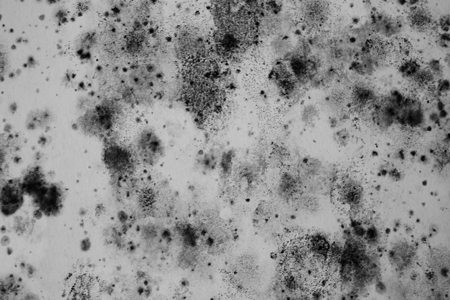
by Eric Brown | Dec 16, 2016 | 37 Symptoms Associated With Mold Illness, Air Conditioning, Attic Mold, Basement Mold, Beware Of Mold When Buying A Home, Bleach and Mold, Can Black Mold Poison You?, Can Mold Kill?, Christmas Tree Mold, Chronic Fatigue Syndrome (CFS), Chronic Inflammatory Response Syndrome (CIRS), Commercial Mold Remediation, Commercial Mold Removal, Crawl Space Vapor Barrier, Crawlspace Mold, Dead Mold Spores, Flood Clean Up, Front Loading Washing Machine Mold, Health, How Toxic Is Mold?, Indoor Air Quality, Killing Mold, Mold and Asthma, Mold and Celebrities, Mold and Chronic Fatigue Syndrome, Mold and Depression, Mold and Famous People, Mold and Genes, Mold and Infants, Mold and Multiple Sclerosis, Mold and Parkinson's Disease, Mold and Pregnant Women, Mold and Sids, Mold and Sinusitis, Mold Facts, Mold In Apartment, Mold In Schools, Mold In The Bible, Mold Information, Mold Inspection, Mold Remediation, Mold Removal, Mold Removal Cost, Mold Risk During Renovation, Mold Sensitized Customer Testimonial, Mold Sensitized Success Story, Questions and Answers, Sewer Backup, Sippy Cup Mold, Stachybotrys Black Mold, Top 15 Mold Prevention Tips, Water Damage Restoration
The Ultimate Mold Education Resource (50 Articles)

The Ultimate Mold Education Resource (50 Articles)
The goal of
Mold B Gone is to educate our customers about mold. We strongly believe that an educated and informed consumer can make better decisions when they have concerns about mold.
Included in this article are 50 links to articles that will help you learn about mold.
Please bookmark this page because we will update it with new articles as they are researched and published.
If you have questions about
mold removal,
crawl space mold removal and encapsulation, other
services we offer, and/or our 1 year up to 25 year
guarantee, call us, 678-697-6267, or send us an
e-mail. We look forward to serving you. 🙂
Mold Facts and Information (13 Articles)

Mold Facts and Information (13 Articles)
-
Priests were the equivalent of today’s mold inspectors. This article lists the three passages cited in Leviticus. Learn more!
-
This article explains why your crawl space is humid and what you can do about it.
-
This article explains what you should and should not do if you find mold in your home, church, school, day care center, store, office building, restaurant, or hotel!
-
Several high profile celebrities have been impacted by mold. Listed in this article are 12 prominent celebrities that have battled mold.
-
This article explains what causes bad indoor air, health signs, and what you can do about it.
-
Mold Fact 1: The Key Ingredient Mold Needs To Thrive Is Moisture. There are 9 more mold facts explained in this article. What do you think they are?
-
Top 4 Reasons Mold Grows In Your Attic! The purpose of this article is to explain why mold grows in your attic and prevention tips.
-
Top 3 Reasons Your Crawlspace Has High Humidity. This article explains why your crawlspace is humid, why this leads to mold and how you can fix the problem!
-
Steps Residents Can Take If They Have Mold In Their Apartment! This article explains what you can do if you find mold in your apartment. Learn more!
-
This article lists and explains the top 10 reasons you need to be aware of mold!
-
The purpose of this article is to explain how and why your crawl space could be contaminating your indoor air.
-
This article provides you with information to help you determine if you have a mold problem and explains what you should and should not do if you do find mold.
-
The purpose of this article is to answer the most common questions asked about crawl spaces and explain why your crawl space needs a vapor barrier. Learn more!
Black Mold (2 Articles)
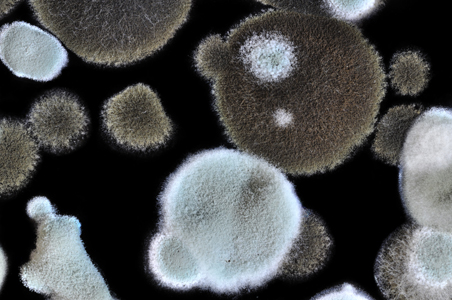
Black Mold (2 Articles)
-
Recently a news article featured a woman who believes that she was poisoned by toxic black stachybotrys mold. This article explores this topic further!
-
Stachybotrys is considered the king of molds because exposure to this toxic black mold causes 15 serious health conditions. Learn more!
Mold and Health (17 Articles)

Mold and Health (17 Articles)
-
The purpose of this article is to help you determine if mold and the indoor air quality of your child’s school is making them sick and what you can do. Learn more!
-
What is the link between mold and chronic fatigue syndrome? Scientific research suggests a relationship between mycotoxins and CFS. Learn more!
-
Wondering why mold is a health concern? This article lists the top 15 questions asked about specific health problems caused by mold. Learn more!
-
Wondering if you are sensitive to mold? This article explains how to determine if you are mold sensitized, seeking treatment, and the next two steps to health!
-
This article explains why mold can be toxic, listing 10 specific health conditions. Learn more!
-
Potential Health Complications Mold Exposure Has On Pregnant Women and Infants! Questions answered about SIDS, asthma, miscarriage, and pulmonary hemorrhage.
-
This article article explains why mold grows on sippy cups, why it could make your child sick, and how you should properly clean the sippy cup!
-
Mold Remediation Improves Health! This article explains why, citing an interview with Jack and Helen Graham, a Mold Sensitized Success Story!
-
Could Some People Diagnosed With Multiple Sclerosis Actually Be Suffering From Mold Sickness? This article explains how and why. Learn more!
-
One in Three people get sick from their Christmas tree. This article explains why and what you can do to feel better. Learn more.
-
25% of people are genetically pre-disposed to mold illness. This article explains why, citing scientific research and 37 symptoms associated with CIRS.
-
This article explains why many suffering from CIRS are diagnosed with depression caused by mold. Both scientific and anectodal data are cited. Learn more!
-
Does Mold Cause Parkinson’s Disease? The purpose of this article is to explain why and how mold could be a possible cause of Parkinson’s Disease.
-
Top 3 Reasons Mold Sickness Is A Hidden Epidemic! You could be sick from mold and not even know it. This article explains why mold is a hidden epidemic!
-
37 million Americans suffer from sinusitis. Cause? This article lists the top 10 stats and facts citing MAYO clinic research that believes mold is the cause!
-
According to the CDC, rates of asthma among children in Georgia is 3% above the national average. Is mold a factor? This article cites stats and research!
-
Mold B Gone helps homeowners and businesses test mold, remove mold and recover from mold.
Water Damage and Mold (4 Articles)
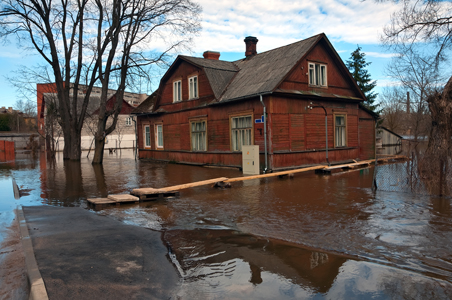
Water Damage and Mold (4 Articles)
-
Concerned about sewer backups? This article explains what causes sewers to backup and how you can prevent this from happening. Learn more!
-
Flood and water damage not only disrupts your life but can also be hazardous to your health! This article explains the top 3 hazards and prevention measures!
-
A flooded home or business is always a stressful situation. This blog provides you with the 3 steps required to reduce flood damage and most importantly, mold!
-
Water damage restoration restores a property to pre-loss condition after a flood. Check out the top 3 facts. Hint: Mold is not the only concern.
Mold Inspection and Prevention (8 Articles)

Mold Inspection and Prevention (8 Articles)
-
Mold growth can be prevented. This article list the top 15 mold prevention tips, to help you live in a mold free home.
-
If you have a front loading machine that has mold problems, this article explains how to prevent it.
-
This article lists the top 3 reasons why you should submit an offer to purchase, subject to a home AND mold inspection!
-
Home improvement is an American tradition. But, did you know that 6 out of 10 homes could have mold? Renovating can cause serious problems. Learn more!
-
Basements are susceptible to mold growth. The first clue of mold is a musty smell. This article provides you with 10 tips to prevent basement mold. Learn more!
-
If you or someone in your family suffers more frequently from colds or flus and you are not sure why, the cause could be poor indoor air quality. Learn more!
-
Do you feel sick when your air conditioner is on? Your AC could be a source of mold contamination. This article explains why. Learn more!
-
Wonder what happens during a mold inspection? This article answers all your questions, listing the top 4 actions taken by reputable inspectors.
Mold Removal (6 Articles)
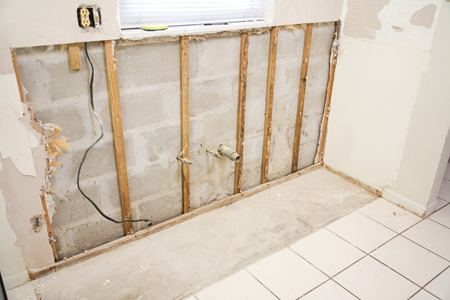
Mold Removal (6 Articles)
-
Have a mold concern, wondering what it will cost to remove? This article provides you with a detailed explanation of how mold removal cost is determined!
-
Mold sprays, bleach, biocides, and fungicides are an ineffective “short cut” to mold removal. Killing mold is not the answer! This article explains why.
-
Mold Removal Is Referred To As Mold Remediation Because Professionals Follow These 8 Steps. This article explains the steps and why you need to hire a pro!
-
Mold B Gone helps homeowners and businesses test mold, remove mold and recover from mold.
-
This article features a testimonial from a mold sensitized individual who was helped by mold removal.
-
This article lists the eight steps in mold removal. Learn more!

by Eric Brown | Dec 2, 2016 | Can Black Mold Poison You?, Can Mold Kill?, Christmas Tree Mold, Chronic Inflammatory Response Syndrome (CIRS), Health, Indoor Air Quality, Killing Mold, Mold and Asthma, Mold and Sinusitis, Mold Facts, Mold Information, Mold Remediation, Mold Removal, Toxic Mold
What Is Christmas Tree Syndrome?
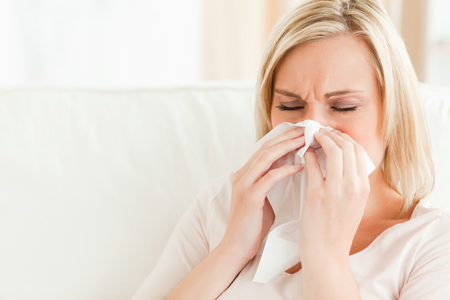
What Is Christmas Tree Syndrome?
Last year, a newspaper article was published to explain the potential health concerns caused by your Christmas tree: “How CHRISTMAS TREES can cause hay fever hell: Pollen grains, dust and mould can trigger sneezing, coughing and a runny nose”
The article dubbed the illness, Christmas Tree Syndrome, because 1 in 3 (approximately 35 percent) people get sick, suffering from hay fever like symptoms, soon after the Christmas tree is set up in the home.
This article explains what causes Christmas Tree Syndrome and provides recommendations on how you can minimize the potential health issues caused by this indoor air quality issue.
What Are The Health Symptoms of Christmas Tree Syndrome?

What Are The Health Symptoms of Christmas Tree Syndrome?
Typical signs that your tree is making you ill include the following:
- Asthma attacks, usually triggered by cladosporium mold
- Rhinitis
- Runny nose
- Sinus pain
- Sneezing
- Wheezing
- Coughing
- Cold like symptoms, that subside when away from the home or the room with the tree in it.
Mold Is The Cause Of Christmas Tree Syndrome!
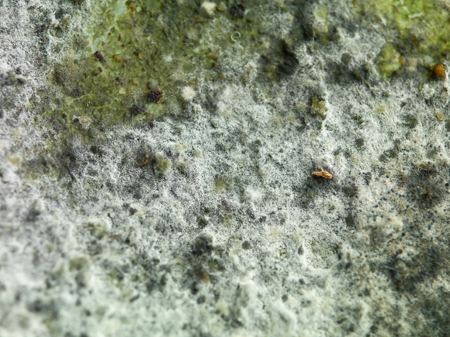
Mold Is The Cause Of Christmas Tree Syndrome!
Prior to the studies documented below, it was thought that tree pollen or even weed killer applied to Christmas trees made people ill.
However, as the studies below conclude, the core cause of Christmas Tree Syndrome is mold, which releases spores and causes allergic reactions:
“Researchers at St. Vincent’s Medical Center in Bridgeport, Connecticut, found that a room containing a fresh Christmas tree for two weeks had mold levels that were five times the normal level. Other studies have shown that levels this high can cause allergic rhinitis and asthma symptoms, says the study’s coauthor, allergist and immunologist Philip Hemmers.”
In another study Dr. John Santilli, compared the level of mold spores in the home before and after the tree was placed in the home. The normal level of mold spores is 800 per cubic meter, but within 14 days of the Christmas tree being in the home, the level of mold spores increased to 5,000 spores per cubic meter.
Another scientific study by allergy specialist, Dr. Lawrence Kurlandsky at Upstate Medical University in New York set out to determine why respiratory illnesses peak around Christmas. The study found 53 different kinds of mold, including, aspergillus, penicillium, cladosporium and alternaria, which can trigger asthma attacks, sneezing and a runny nose. One of the key conclusions made by this study was 70 percent of the molds found triggered allergies and asthma.
What Can I Do To Minimize Mold Exposure From My Christmas Tree?

What Can I Do To Minimize Mold Exposure From My Christmas Tree?
Mold spores are found naturally on Christmas trees, which will flourish once they are in a centrally heated home.
With this in mind, if you can manage Christmas with an artificial tree, that is the best solution. Please note, artificial trees can accumulate a layer of dust and even mold if not stored properly. Be sure to store your artificial tree in a dry area and preferably in plastic tubs to minimize exposure to moisture and dust.
However, if you must use a live Christmas tree, here are some tips to minimize the health impact:
- Thoroughly hose down your tree and let it dry before bringing it into the house. If you bought your tree at a nursery, ask if they have tree washing services.
- Clean all ornaments and lights before putting on the tree; they can harbor dust and molds. Store all decorations in plastic containers that can be easily wiped down since cardboard can potentially attract dust and mold.
- Minimize exposure. If you’re sensitive to molds, keep a live Christmas tree no more than four to seven days.
- Run an air purifier in the same room as the Christmas tree. This may help alleviate symptoms.
- Allergy medication may also help alleviate some symptoms as well.
- Since mold spores may accumulate the longer your tree is in the house, consider getting rid of it first thing on the 26th.
Happy holidays from your friends at Mold B Gone. If you have questions, we are here to help! If you think you have mold, call us, 678-697-6267 or contact us via e-mail for further assistance.

by Eric Brown | Nov 18, 2016 | 37 Symptoms Associated With Mold Illness, Can Mold Kill?, Chronic Fatigue Syndrome (CFS), Chronic Inflammatory Response Syndrome (CIRS), Health, How Toxic Is Mold?, Indoor Air Quality, Mold and Asthma, Mold and Chronic Fatigue Syndrome, Mold and Depression, Mold and Genes, Mold and Multiple Sclerosis, Mold and Parkinson's Disease, Mold and Pregnant Women, Mold and Sinusitis, Mold Facts, Mold Information, Mold Remediation, Mold Removal, Questions and Answers
What Impact Do Genes Have On Mold Illness?

What Impact Do Genes Have On Mold Illness?
Mold B Gone specializes in helping mold sensitized individuals.
One of the questions we are often asked is why do some people get sick from mold and other’s do not?
One of the biggest challenges faced by people sick from mold is the fact that doctors, friends, and other family members dismiss their symptoms simply because they do not get sick when exposed to mold.
Many victims of mold sickness are labelled as hypochondriacs and are accused of not being sick at all.
This is tragic because many people that get sick have no control over their sickness because their bodies have a genetic pre-disposition to mold illness.
The other major problem with mold illness is the fact that there are so many symptoms, 37, associated with it, meaning it is difficult for physicians to pinpoint the cause.
This article explains how your genes impact mold illness and what you can do if you suspect that you suffer from Chronic Inflammatory Response Syndrome (CIRS).
Legal Challenges Faced By Mold Sensitized Individuals

Legal Challenges Faced By Mold Sensitized Individuals
Sickness from mold has been around for decades.
Victims of mold have tried to plea their cases in the courts seeking compensation for the health damages caused by poorly maintained homes and buildings that had water damage and mold.
Unfortunately, many of the plaintiffs lost their battle because the courts did not believe that mold actually makes people sick.
Despite this, data from thousands of contractors working with occupants of water-damaged buildings documented the health challenges that many mold sensitized individuals faced.
According to Erik Johnson, a mold expert and survivor, it was not until the 1990s, that the World Health Organization, acknowledged that “Sick Building Syndrome” could be caused by toxic mold.
Moving forward, finally, it seems that there is greater recognition that mold is in fact the cause of sickness for many. In 2015, the MOLDY documentary featured health professionals and people who have suffered mental and physical health issues after living in moldy homes. This was a ground breaking documentary because it brought the issue of mold and sickness to a much broader audience, thereby creating significant awareness of this issue.
In a presentation at the PLR Expo in Toronto, Canada, in 2015, CEO of Wonder Makers Environmental, Michael Pinto presented “12 Future Trends In The Restoration Industry“.
One of the most notable trends he cites is a “A Tighter Connection Between Medicine and Environment“.
Pinto cites new diagnosing techniques to identify the illness, Chronic Inflammatory Response Syndrome (CIRS) (detailed below), which legitimizes the tie between Water Damaged Buildings (WDB) and sickness. Research has identified a genetic component to this condition (explained below), a screening test (VCS), and most importantly, a treatment regimen.
Other trends Pinto believes demonstrate the important ties between medicine and the environment include the Environmental Relative Moldiness Index (ERMI) which is a scientific test that analyzes dust samples for 36 mold species. This test provides base information to identify CIRS because 26 of the mold species are considered to be water damage indicators.
This test is important because one sample can be analyzed to identify the extent of water damage in the building that could make someone susceptible to CIRS sick. Importantly, this test will provide an ERMI score, ie. a HERTSMI-2 score that can be given to physicians and will help them assess whether a building will make their patient sick.
Because of the growing medical awareness and the fact that there are now medical tests and drugs to diagnose and treat mold illness, Pinto believes that one of the other consequences of this acknowledgement will be a “More Active Justice System” where plaintiffs will now be able to get compensation because they now have science to back up their claims.
25% Of People Have A Genetic Predisposition to Mold Illness

25% Of People Have A Genetic Predisposition to Mold Illness
The most interesting aspect of the research on the effect that Sick Building Syndrome has on patients pertains to genetics. One of the biggest problems with mold sickness is that it impacts everyone differently. Some may experience minor allergies, and other health conditions like asthma and chronic sinusitis, while other mold sensitized patients may suffer severe illnesses.
One physician documented the health symptoms of 227 patients that lived in water damaged buildings during a three year period. What this doctor found was that 98% of his patients had one of the gene types where their immune systems were not able to effectively deal with contaminants from water damaged buildings.
As stated by Pinto:
“In layman’s terms, two different genes have been isolated, which keep some people’s immune systems from functioning properly when they have been exposed to contaminants from water-damaged buildings. Instead of properly identifying and eliminating the foreign invader, those body defense mechanisms increase the problem. When viewed with a basic understanding of genetic distributions, this research made it clear that up to a quarter of the population (25%) is at increased risk from exposure to water-damaged buildings.“
This research is very significant because it demonstrates that up to 25% of the population has a genetic pre-disposition that makes them more susceptible to mold illness and the condition known as Chronic Inflammatory Response Syndrome (CIRS).
Because of this research, the scientific community and legal system is now taking much greater notice because diagnostic tests, lab tests and treatment tools are being developed to help these patients.
37 Health Conditions Associated With CIRS!

37 Health Conditions Associated With CIRS!
Listed below are the 37 symptoms associated with CIRS.
- Fatigue
- Weakness
- Aches
- Muscle Cramps
- Unusual Pain
- Ice Pick Pain
- Headache
- Light Sensitivity
- Red Eyes
- Blurred Vision
- Tearing
- Sinus Problems
- Cough
- Shortness of Breath
- Abdominal Pain
- Diarrhea
- Joint Pain
- Morning Stiffness
- Memory Issues
- Focus/Concentration Issues
- Word Recollection Issues
- Decreased Learning of New Knowledge
- Confusion
- Disorientation
- Skin Sensitivity
- Mood Swings
- Appetite Swings
- Sweats (especially night sweats)
- Temperature Regulation or Dysregulation Problems
- Excessive Thirst
- Increased Urination
- Static Shocks
- Numbness
- Tingling
- Vertigo
- Metallic Taste
- Tremors
According to Dr. Ritchie Shoemaker, CIRS is:
“an accute and chronic, systemic inflammatory response syndrome acquired following exposure to the interior environment of a water-damaged building with resident toxigenic organisms, including, but not limited to fungi, bacteria, actinomycetes and mycobacteria as well as inflammagens such as endotoxins, beta glucans, hemolysins, proteinases, mannans, c-type lectins and possibly spirocyclic drimanes, plus volatile ogranic compounds.“
For 75% of the population, when exposed to biotoxins caused by mold, the individuals immune system responds by binding with the invading poison that allows its cells to filter the biotoxins through the liver, kidneys, and other organs. In contrast, 25% of the population that have the genetic susceptibility to mold illness get sick because their bodies immune system does not bind to the biotoxin, meaning it is not eliminated and therefore continues to circulate, causing the many symptoms, documented below.
The “C” in CIRS refers to the term “Chronic” because individuals that are exposed to poisons from mold are unable to eliminate the toxins from their body, resulting in on-going and escalating sickness, particularly if the person is continually exposed to mold. This is the primary reason that the first priority of medical practitioners treating mold sensitized patients is to begin the detox process which also must coincide with movement away from the building that is constantly exposing the person to the toxins.
The “I” in CIRS refers to the term “Inflammatory” because the constant exposure to the toxins creates a cycle of sickness, meaning the individual’s immune system is constantly trying to fight the toxins, leading to inflammation.
The “R” in CIRS refers to “Response” because the human body is designed to respond to invading toxins. In the case of patients suffering from mold sickness, the immune system is constantly trying to fight the toxins causing a stress on the complete immune system of the individual, which in turn leads to other health conditions.
As stated by Pinto, the “S” in CIRS refers to “Syndrome” because:
“The symptoms are a result of many factors, including external exposures and internal responses. The contaminants from water-damaged buildings should trigger the activation of an immune response, but some people’s genetic structure does not allow the proper recognition of the biotoxin. Since this combination of circumstances inhibits the clearance of the poison from the body, these harmful substances continue to circulate and create continual damage. With such individuals there is no linear dose/response relationship, meaning that even trivial exposures can create severe problems.“
Is CIRS Life Threatening?

Is CIRS Life Threatening?
The major problem that individuals with CIRS face is their bodies immune systems become severely compromised and weakened from the vicious cycle of invading poison, immune response, and inflammation.
The end result is many of their bodies systems are damaged leading to a wide range of health conditions, some life threatening.
For this reason, many mold survivors have reported that they have abandoned the primary residence that initially made them sick; instead, seeking shelter in trailer parks, and very dry areas, with desert like conditions where moisture is limited. These drastic measures were taken by these individuals because their bodies have become so sensitized to mold that even minor exposure triggers severe reactions.
Fortunately, the continued research on mold sickness is creating hope because treatments have developed that help individuals detox and eliminate the poisons, followed by rebuilding the immune system so that it regains strength.
Do You Suspect You Have A Mold Illness?

Do You Suspect You Have A Mold Illness?
The core problem with CIRS is the fact that there are so many symptoms associated with the condition.
Are you constantly seeking medical attention?
Have you been feeling sick for an extended period of time?
If you think you may be sick because of mold, review the mold sensitized interviews to gather more information.
The next step is to verify that you actually have a bio-toxin illness caused by mold, meaning you should get your home tested for mold.
Then seek out an environmental physician who can properly diagnose, determine if you have a genetic pre-disposition to mold illness, and most importantly begin treatment so your body can properly detox.
If you are diagnosed with mold illness, your physician may request that you leave your home for awhile during the detox process.
During this period, we advise that you get all the mold removed from your home, your contents cleaned, and a thorough cleaning of your HVAC system to prevent the spread of mold spores after the remediation is complete.
Got Mold Questions?
Questions? Need help? Mold B Gone looks forward to serving you, with the added benefit that we understand the needs of mold sensitized individuals. Call 678-697-6267 or send us an e-mail!
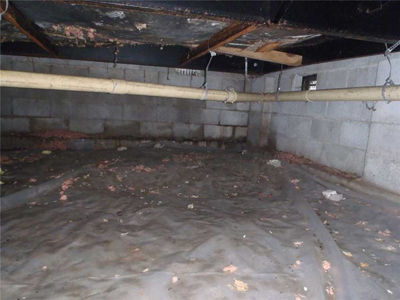
by Eric Brown | Oct 21, 2016 | Basement Mold, Crawlspace Mold, Health, Indoor Air Quality, Mold Facts, Mold Information, Mold Remediation, Mold Removal, Questions and Answers, Toxic Mold
Top 3 Reasons Your Crawlspace Has Mold!
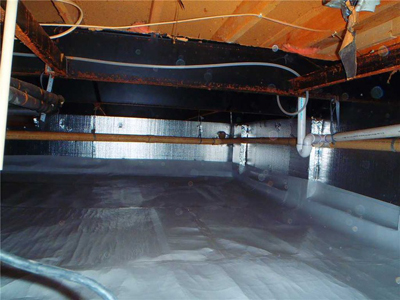
Top 3 Reasons Your Crawlspace Has Mold
Crawlspaces are the ideal environment for mold to thrive.
Most crawlspaces are dark, dirty, and humid. Bugs like to live in there. They’re vented to the outside air in the summer (and in the winter if you neglect to close your vents) which can be very humid and this defeats the purpose of venting.
Mold is a fungus that requires moisture and high humidity to grow and thrive.
Like plants, mold has cells. However, unlike a plant that has chlorophyll and able to makes it’s food through photosynthesis, mold can not feed without moisture.
Mold reproduces by releasing it’s spores, this is mold’s survival mechanism.
In addition to moisture, mold also requires the right temperature of 41 degrees fahrenheit up to 100 degrees fahrenheit, common in Atlanta, Georgia and the South.
The final ingredient mold needs to thrive is food: high cellulose materials such as paper and wood, drywall, wallpaper, carpet, ceiling tiles, dust, and dirt.
Now that you understand why mold grows in your crawlspace, the remainder of this article will list and explain the top three reasons why you have moisture in your crawlspace and what you can do to fix the humidity issues.
How To Measure The Relative Humidity Of Your Crawlspace?
The easiest way to determine the relative humidity of your crawlspace is to use a hygrometer or you could install a digital thermo-hygrometer with a remote sensor to track it.
If the relative humidity is greater than 50% this could cause moisture issues that leads to mold.
Mold will begin to grow at 50%, and will thrive when the humidity is greater than 70%.
The key to ensuring that your crawlspace does not become a source of mold is to figure out how to control the humidity.
Listed below are the top three reasons your crawlspace has high humidity.
#1 Water Accumulation
If your crawlspace has standing water, you probably have a drainage problem or a plumbing leak. This needs to be fixed immediately.
You do not want water to accumulate in your crawlspace because this will compound your potential mold problems, not to mention as mold grows it will impact the indoor air quality of your home and health.
#2 Moisture Evaporating from the Ground
When homes are built with crawl spaces, most builders neglect to cover the ground, meaning that the crawlspace is covered with dirt.
Dirt has moisture and as the moisture evaporates, it will increase the humidity in your crawlspace.
Unfortunately, this is a common problem in Atlanta, Georgia, and other southern states. To prevent moisture from evaporating from the ground, the easiest solution is to cover it up with a vapor barrier during crawlspace encapsulation.
#3 Outdoor Air Coming in through the Crawl Space Vents
The third reason your crawlspace could have moisture issues is through the vents.
When you bring outdoor air into the crawlspace, the relative humidity can increase.
Cool air cannot hold as much moisture as warm air, so the air that enters is now closer to its saturation point, referred to as the dew point.
It might be 60% relative humidity outside, relative to a temperature of 90 degrees fahrenheit, but when that air enters the crawlspace and cools down to 75 degrees fahrenheit, the relative humidity jumps up to 95%.
In the past, we were told that crawlspaces needed to be ventilated. Now, however, we are learning that crawlspaces need to be treated almost as if they were living spaces. In other words, areas that are in contact with your living space affect your living space.
Fixing Your Crawlspace Humidity and Mold Problems
If your crawlspace is vented and the relative humidity is high, you need to fix the problems. It is not as simple as installing a dehumidifier either.
If you have water accumulation, the source of the water must be addressed. If it is a plumbing issue, fix the leak. If the problem is caused by drainage, this must be fixed as well.
If the problem relates to moisture evaporating from the ground or outdoor air coming into your vents, this can be fixed with crawlspace encapsulation.
Mold-B-Gone Remediation, LLC specializes in drying out damp crawlspaces and turning them into dry, healthy foundations for your home.
Our dry-space crawlspace system includes the following:
- Thorough cleaning of the crawlspace, including mold removal and prevention.
- Installation of a wall-to-wall guide, durable, 14 mil vapor barrier.
- Attachment of the vapor barrier over ground and up sidewalls to 6 inches below floor joists.
The end result is an energy efficient, healthy home.
Got Crawlspace Mold Questions?
If you are concerned about humidity in your crawlspace, call 678-697-6267 or send us an e-mail. We look forward to serving you! 🙂
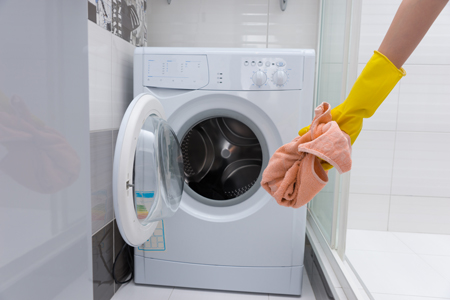
by Eric Brown | Sep 30, 2016 | Front Loading Washing Machine Mold, Health, Indoor Air Quality, Mold Facts, Mold Information, Questions and Answers, Washing Machine Class Action Law Suit
Rebate Available For Front-Loading Washers With Mold Problem!
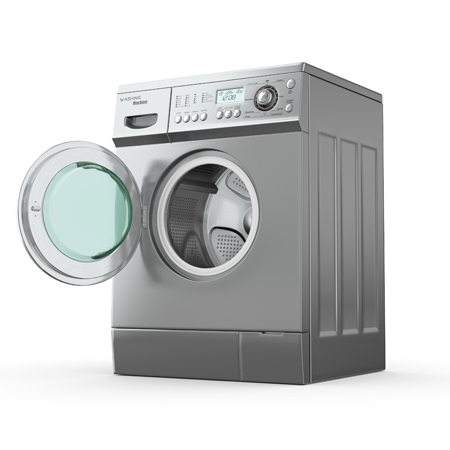
Rebate Available For Front-Loading Washers With Mold Problem!
In 2014, Consumer Reports published an article about consumer problems with front-loading washing machines. The primary complaint many consumers had was mold issues in their washers.
It turns out that the manufacturers of these washing machines knew about this problem, but still continued to sell the washers to consumers. This resulted in a class action law suit. The lawsuits claimed that the washers fail to self-clean. As a result, they accumulate bacteria and mold, resulting in bad odors, ruined laundry, and for the mold-sensitive individual, health issues.
This article will explain why your front-loading washing machine has mold problems and what you can do to get compensated now that the suit has been settled.
Why Front-Loading Washing Machines Have Mold Problems!
The core problem is a design flaw that causes the machine to accumulate mold because mold grows in the gaskets of the high-efficiency machines.
For many people this is not an issue. However, for the mold sensitized, for infants and children, people with asthma and allergies to mold, and compromised immune systems, washing machine mold growth has been an issue.
If you have one of the flawed washing machines, here are some things you can do:
- Wipe the door gasket and glass dry once you’re done.
- Clean the detergent dispenser and any attachments once or twice a month.
- Run a dehumidifier if your laundry room is damp.
- Keep the washer door ajar between loads to allow air to circulate. If you have small children, keep the laundry-room door locked.
- If none of this works, call the manufacturer for service and save all mold-related paperwork, even after the warranty expires.
You also qualify for compensation if you have a washing machines that falls under the settlement. Details below.
Rebate Details On Front-Loading Washing Machine Mold Problems!
On September 23, 2016, Judge Christopher A. Boyko of the United States District Court for the Northern District of Ohio granted final approval to the settlement of the Whirlpool front-load washer mold cases.
The claims period closes soon, providing class members who experienced mold or odor the choice of $50 cash, a 20% discount off purchase of a new washer (worth $148.50) or, if they paid out of pocket or to replace their washer due to mold /odor, dollar for dollar cash reimbursement up to $500.
Owners of the affected Whirlpool, Kenmore, and Maytag-brand front-loading washers can now submit claims as part of the settlement of several class action lawsuits brought on claims that the machines fail to adequately self-clean. The suits alleged that certain Whirlpool, Kenmore, and Maytag brand front-loading washing machines manufactured between 2001 and 2010 fail to adequately self-clean themselves of laundry residue, resulting in mold or mildew buildup that can cause bad odors and ruined laundry.
If you are included in the Settlement, you may qualify for one of a variety of benefits including:
- Cash payment.
- Rebate on the purchase of a new washing machine or dryer.
- Or reimbursement for out-of-pocket expenses incurred due to past mold or odor problems in your washing machine.
Please read the FAQ notice on the WasherSettlement.com settlement website carefully.
For a full list of washers covered by the class action lawsuit, click here.
To see details of the settlement or for more information, visit www.washersettlement.com or call 844-824-5781.
Submit A Claim!

Submit A Claim!
The only way to get a cash payment, a rebate for the purchase of a new washing machine or dryer, or reimbursement for the repair or replacement of a washing machine with mold or odor problems is to complete and submit a Claim Form, including all required documentation.
The deadline for submitting claims for Whirlpool, Kenmore and Maytag customers is October 11, 2016.
The deadline for submitting claims for LG customers is October 10, 2016.
Got Mold Questions?
If you have mold or IAQ questions, please give us a call, 678-697-6267 or send us an e-mail. We look forward to serving you! 🙂
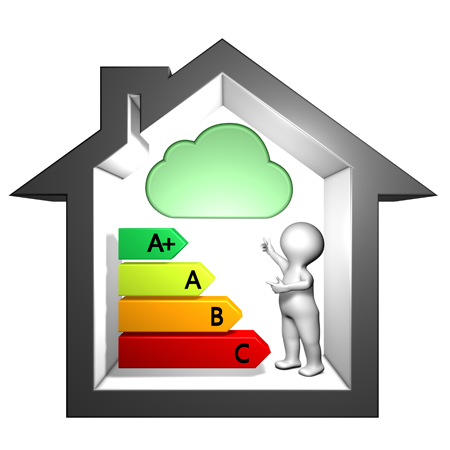
by Eric Brown | Sep 25, 2016 | Health, Indoor Air Quality, Mold Facts, Mold Information, Questions and Answers
What Is Indoor Air Quality Testing?

Why Should I Have An Indoor Air Quality Test?
Most people are unaware that their indoor air could be polluted. Indeed, today, we spend 90% of our time indoors, relying on our HVAC systems to create a constant stream of healthy air. Our health is dependent on the the quality of the air we breathe. The problem with indoor air pollution is that is not visible to the naked eye, meaning the quality of your air could be making you sick without you even knowing it. Despite your efforts to maintain a clean and healthy household, you still may be getting sick because of indoor pollutants.
Symptoms of Poor Indoor Air Quality
Our bodies are designed to rid ourselves of toxins and pollutants, this is one of the reasons that we get sick and experience colds and flus. However, if you or other’s in your family seem to always be sick, the air you are breathing could be the cause.
Do you often experience the following health issues?
- Headaches;
- Respiratory issues such as asthma, sinusitis, and other respiratory infections such as bronchitis and pneumonia;
- Excessive coughing and/or a breathless feeling;
- Dizziness, confusion, malaise, trouble concentrating, and other cognitive disorders;
- Skin irritation, itchiness, and rashes;
- Ear and/or eye infections
If you consistently experience these symptoms, the air you are breathing could be the cause.
A simple test is to record how you feel when you are away from your home or business. If you feel sick when you are in your home or business, but feel much better when you are away, then this could be a clue that the air is making you sick.
What Causes Poor Indoor Air Quality?
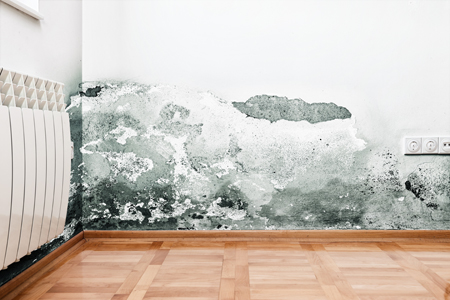
What Causes Poor Indoor Air Quality?
Contaminated air can seep in from the outside or could be caused by indoor sources like construction materials, consumer products, mold, insects, and pets. The effect of pollutants is compounded by poor ventilation which allows pollutants to accumulate to unhealthy levels.
Poor indoor air quality in your home or business could also be caused by factors such as the building design, heating/cooling design, and/or previous water damage.
Other potential causes of poor indoor air quality include the following:
- High humidity levels.
- Airborne dust problems from poorly maintained ducts or other sources in the building.
- Volatile Organic Compounds (VOC’s) which are chemicals released by building materials and furniture.
- Inadequate ventilation caused by mechanical or building issues.
- Combustion problems leading to high levels of Carbon Monoxide (CO) or Carbon Dioxide (CO2).
- Sewer gas leakages, leading to odors.
- Recurring water damage, causing growth of mold and other bacteria.
- Radon, the second highest cause of lung cancer, most likely seeping through the foundation in your basement.
- Radioactive marble or granite in the home.
- Air borne asbestos, a cause of mesothelioma.
What Should I Do?

What Should I Do?
The easiest way to determine if the air you are breathing is making you sick is to call an indoor air quality specialist to test the air. Indoor air quality professionals have specialized equipment that can test the air for radon, mold spores, and other pollutants.
At Mold B Gone, our Indoor Air Quality testing uses OSHA, NIOSH, and EPA testing procedures to investigate indoor air quality complaints. We can test for 100s of compounds, including gases, chemicals, dust, and biological samples to give you a profile of your air.
One of the services we specialize in is mold testing, which is done by taking air samples from both inside and outside the building so the spore numbers can be compared with each other. If the testing shows high mold spore counts, then a mold inspection and mold removal plan will be provided to you.
In order to ensure the most accurate and reliable results, Mold B Gone utilizes specialized calibration instruments and sample handling procedures. In addition, controlled samples are compared with yours to ensure the most accurate results possible. We use Third Party Labs to analyze the results of all of the samples we take to provide you with a detailed air quality report and recommendations.
Fall Mold Inspection Promotion!

Fall Mold Inspection Promotion!
Contact Mold B Gone for a free mold inspection, a value of $250, PLUS if you need any testing, you get that for 50% off!
Got Indoor Air Quality Questions?
If you are concerned that you may have indoor air quality issues and have questions, call 678-697-6267 or send us an e-mail.






























